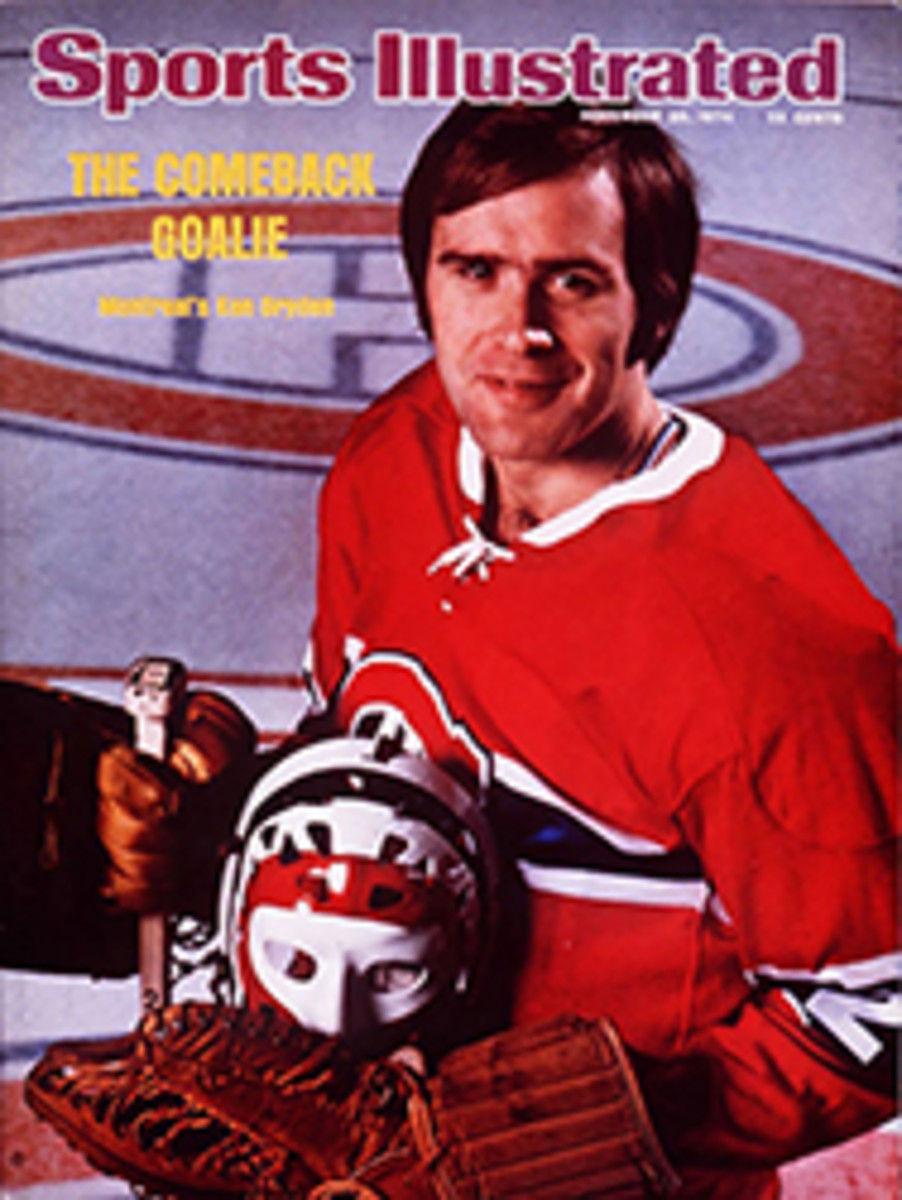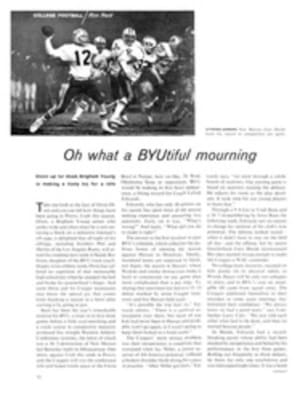
ACCORDING TO HISTORY, THE ONLY GAME HOYLE KNEW WELL WAS WHIST
According to Cotton? Beaufort? Seymour? Jones? Foster? Morehead, Frey, Mott-Smith? No. "According to Hoyle" is the only phrase that rings with enough authority to settle countless irregularities in games of pinochle, gin rummy, canasta and even Scrabble. But the truth is that Edmond Hoyle wrote nothing whatever about these and many other modern games. In fact, he never even heard of most of them. How could he? Hoyle was born in England almost 300 years ago, and he died at least 50 years before the game of poker was invented.
Hoyle was an authority primarily on whist, a predecessor of modern bridge. He was probably educated for the law, but by 1741 he was giving lessons in whist from his quarters in Queen Square, London, in the manner of a music or dancing master. He wrote a text on the game, which he sold to his students in manuscript form for a guinea a copy. The demand for the text soon became so great that within a year Hoyle published it under the title A Short Treatise on the Game of Whist. It was an instant success, and Hoyle was quick to come forth with similar manuals on backgammon, piquet and quadrille. (His reputation as an authority on poker is pinned heavily on a treatise he did about a game called brag, which was a precursor of poker.) Eventually all these, together with the whist text, were brought together under the collective title Mr. Hoyle's Games. Hoyle saw the book through 14 editions during his lifetime, and a 15th was in progress when he died in 1769.
Far from being "compleat," Hoyle's Games bears little resemblance to the Hoyle books published today. Most of the modern ones are encyclopedic—some covering as many as 500 indoor games—and are patterned not so much on Hoyle's Games as on such compendiums as Charles Cotton's Compleat Gamester (published in 1674) and Richard Seymour's The Court Gamester (published around 1720). Hoyle did add chess to his later editions, and he wrote some related and ponderously titled works such as An Essay Towards Making the Doctrine of Chances Easy to Those who Understand the Vulgar Arithmetick only. But even his later editions were far different in both content and treatment from the modern Hoyle books. For example, he wasted no words on the elementary mechanics of whist (such as the number of players, the manner of the deal, the object of the game), whereas most of the modern books bearing his name contain almost nothing else.
Why, then, did the name Hoyle stick so strongly? There is no simple answer. The 18th century was a great age of whist and, if we may invert Lord Byron's line, whist owes to Hoyle what Troy owes to Homer. Hoyle was Mr. Whist of his day. Of course, the game was known even earlier. Alexander Pope and others had mentioned it in their writings, and, almost 100 years before the reign of Hoyle, Charles Cotton had written, "Every child of eight years hath a competent knowledge of this game." But it was Edmond Hoyle who raised whist from a childish pastime to a disciplined intellectual pursuit to be enjoyed by adults.
Hoyle was, in fact, the first man to write seriously about card games and was the first to apply to them the theories of probability. (He should be remembered more for his contributions to probability theory, or at least for the popularization of it, than for formulating laws of games, of which he did very little.) Hoyle was indebted to the theories of Abraham de Moivre, an exiled French mathematician who supplemented his income by hiring himself out as a consultant on gambling and insurance. In any event, Hoyle's fame grew from his calculations of whist problems and from the seriousness with which he approached the subject.
The times were right, too. England prospered. London bustled. There was money and there was leisure. Whist became a favorite pastime and topic for discussion in the coffeehouses and chocolate houses to which the intellectual renascence of the 18th century has been credited. Word of mouth has always been one of the best forms of advertising for an author, and Hoyle published during the heyday of bookish talk and gossip, what with Boswell chronicling the rakish peregrinations of Johnson and the gallivanting Casanova rolling high wherever he went.
Almost immediately Hoyle's treatise on whist inspired a number of satires, which furthered the master's reputation immensely. One of these satires was a skit called The Humours of Whist, in which Professor Whiston was a caricature of Hoyle. In a prologue a character says:
Who will believe that Man could e'er exist.
Who spent near half an Age in studying Whist?
Grew gray with Calculation—Labour hard!
As if Life's Business center'd in a Card?
Along with the rise of whist came a number of exclusive clubs devoted to the playing of the game in London. White's was one of the more famous, and Hoyle helped draw up its code of whist laws. The stories and the entries recorded in White's Betting Book are downright scandalous. The following quote from L. J. Ludovici's The Itch for Play gives an indication of the kind of money that could be at stake on the fall of a card: "In February 1775 Sir John Bland frittered away his entire fortune at White's playing Hazard: while General Scott, father-in-law of George Canning, is reputed to have won £200,000, "thanks to notorious sobriety and to his knowledge of whist.' "
That Hoyle was taken as seriously in the private homes as in the coffeehouses and clubs is made clear by Fielding's Tom Jones, published in 1749, seven years after Hoyle first gave his treatise to the world: "...but when you hear what hath happened this evening, you will, I believe, think me excusable. I happened to come home several hours before my usual time, when I found four gentlemen of the cloth at whist by my fire;—and my Hoyle, Sir—my best Hoyle, which cost me a guinea, lying open on the table, with a quantity of porter spilt on one of the most material leaves of the whole book. This, you will allow, was provoking...."
All in all, it must be concluded that Hoyle's name stuck mainly because he made such a reputation for himself in the society of his day. And yet his 18th-century fame is not sufficient to explain why his authority holds today. None of his writings has survived except as collector's items. Almost nothing is known of his private life. No scholar is sure of the exact date, or the place, of his birth. No authenticated portrait has been found. Biographical books and magazine articles about him have not been published. He was the closest thing to a literary mystery man that his century produced.
It is indeed paradoxical that so little is known of this best-selling author of the 1700s even while his name has become a household word today. And his authority goes beyond games; even weddings and funerals have been conducted according to Hoyle. The name has embedded itself solidly in the fabric of the language.
The only humanizing story about Hoyle the man is that he wasn't a very good whist player. Some writers have called him third rate, and others have lowered him to the sorry ranks of the kibitzer. It is entirely probable that Hoyle did cadge from the better whist players of his time, and the successive editions of his text show marked improvements over the original. Anyhow, he can be forgiven for not being the best whist player in London or Bath. As Gerolamo Cardano pointed out in The Book on Gaines of Chance (written around 1520), knowledge about and skill in such pursuits are not necessarily one and the same. What Hoyle seems to have lacked in skill across the gaming table was more than made up for in knowledge and by the vigor of his prose on the subject of whist.
The Hoyle works present headaches for the bibliophile. The many editions and changes of title and missing publication dates are by themselves confusing enough, but the real problem is that from the outset his books were pirated in wholesale lots. If Hoyle came out with a new edition, the pirates immediately came out with a new one as well. They copied not only his matter but also his manner and even his book design. If Hoyle changed type, the pirates changed type. No sooner had Hoyle started signing his name to all authentic copies of his books than the pirates began forging it to theirs. When Hoyle's publisher also started signing the authentic copies, the pirates quickly followed suit.
Because of the many pirated editions, it is difficult today to tell a real Hoyle from a fake. There are few, if any, remaining copies of the original first edition. One at the Bodleian Library at Oxford is probably an original, but doubts have been voiced about even that one. The pirating continued long after Hoyle's death, and another form of free-booting quickly set in. Within a few years Charles Jones published Hoyle's Games Improved, by Charles Jones, and James Beaufort published Hoyle's Games Improved, by James Beaufort. The trend was set.
By 1900 dozens and dozens of books had appeared with Hoyle's name in the title. A Hoyle was published in America as early as 1860, and The Standard Hoyle, a complete Guide upon all Games of Chance, came out in New York during 1887. Also, a number of editions appeared in France, Germany and other countries. They continue to be published, too, year after year.
Use of the Hoyle name owes more to business reality than literary tradition. "Hoyle" sells books. Several authorities, some of whom were probably much more learned on games in general than Hoyle ever was, have tried unsuccessfully to buck the Hoyle mystique. R. F. Foster, an authority who reigned from 1880 to 1920, wrote a book called Encyclopedia of Games, but it did not sell until the title was changed to Hoyle. Ely Culbertson, Albert H. Morehead, Richard L. Frey and Geoffrey Mott-Smith are some of the modern authorities on indoor games, but their compendiums invariably carry the name Hoyle in the title.
For the past 20 years or so John Scarne has tried hard to replace "according to Hoyle", with "according to Scarne." He has failed, and the name Hoyle lives on. As Charles Goren has put it, "A card room without a Hoyle is like a hotel room without a Bible."

